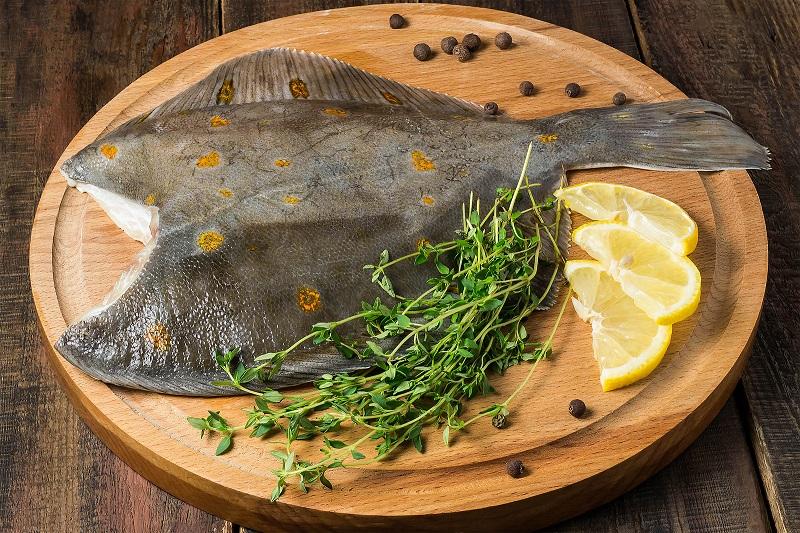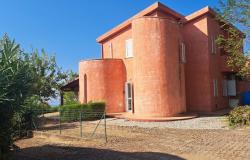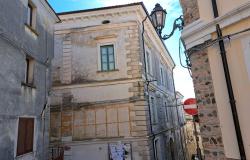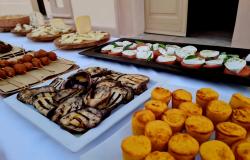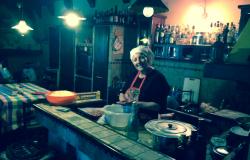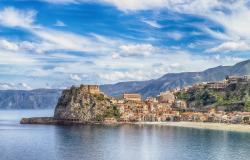John Bensalhia takes his place at the Christmas dinner table to look at the traditions of serving fish and pasta dishes in the festive season...
Close your eyes. Think of Christmas dinner. What's the first thing you think of? Turkey? Cake? Cranberry sauce?
Well, yes to all of those but two common foods at the Italian Christmas table are fish and pasta. Fish and pasta dishes are traditional elements of an Italian Christmas meal – and in the case of the former, traditionally eaten on Christmas Eve.
The day of the 24th December sees the Feast Of The Seven Fishes (Festa dei sette pesci) which is also known as The Vigil (La vigilia). This means that on Christmas Eve, no meat is consumed – only vegetables, and of course, fish.
 Photo Credit: ItaloAmericano
Photo Credit: ItaloAmericano
The Feast of the Seven Fishes
The story goes that this tradition originated in southern Italy in regions such as Naples and Sicily. The Feast Of The Seven Fishes marks the wait for the moment that Jesus was born and also honours the Roman Catholic tradition of abstinence. The Catholic tradition is that fasting takes place until Holy Communion at Midnight Mass, the moment that Christmas Day kicks in. On a health level, this tradition also helps prepare the body to cope with the deluge of food on the next day. Eating lean saves a bit of space for all the meals that come your way on Christmas Day!
So what does the number seven stand for? Some have theorised that it represents the seven sacraments while others have asserted that it represents the number of days that it took God to create the Earth. Of course, the amount of fish dishes doesn't stick strictly at the number seven – although this is the common number of different seafood fishes served. Some families can even serve up to 13 types of fish: the number 13 is said to represent the 12 apostles and Jesus himself.
This tradition allows for a range of delicious fish dishes. It also allows for a great range of creativity in the kitchen as you can serve the fish dishes in whichever way you choose: whether as a main meal, as a soup or as a salad. The choice of fish dish also tends to vary from region to region.
Common fish dishes
In southern Italy, for example, one of the most common fish dishes is that of baccala – or salted cod fish. It's said that production of salt cod is at least 500 years old, and can be prepared and served in many forms, whether in a casserole or as separate, battered, deep fried bites. Preparation time for this fish can take up to three days as it must be rehydrated and desalinated by soaking in cold water with changes of water twice or even three times a day.
Another popular fish is calamari – or squid. Calamari can be eaten in all sorts of formats such as in soup, with pasta or fried. Batter coated deep fried squid is a popular choice. Frying time is very quick – lesser than two minutes in order to prevent the fish from getting too tough to eat. Squid rings and arms are commonly served fried: coated in batter and then fried in oil. Fried smelts are also popular. These small fish are popular in the Calabria region and make for a very welcome addition to the dinner table on Christmas Eve.
A worthy fish delicacy from Sicily is Involtini of swordfish. This is a roulade that combines a myriad of ingredients. It's made with ingredients such as breadcrumbs, juice, dried raisins and spices and herbs such as parsley, basil and ginger. It's a sophisticated dish that guarantees enjoyment by all. For a lighter taste of sophistication, Ligurian mussel soup is also worth a taste. Popular along the coast of the peninsula, this soup has a light, flavoursome taste. If you're looking for a good fish stew, then a good port of call is Cazciuco. This stew mixes octopus, clams, mussels and also tomatoes along with fish stock or broth.
Fish and pasta dishes make for a winning combination too, and a good example of this fusion is Fish Tortelli. It's a popular choice on Christmas Eve as it's easy to make. In fact, it's an old recipe as Tortelli was first written about in a document dating all the way back to the 13th century.
Pasta for all applications
On the subject of pasta, it's a dish that's widely consumed at Christmas. It can be eaten both on Christmas Eve or on Christmas Day (or both if you're so inclined!). One of the more intriguing Christmas Eve pasta dishes can be found in Friuli. Cialson may be ravioli but with a twist – there are all sorts of fillings in the mix, including ricotta, raisins, dried figs, chocolate and candied citron. It's one of the more unorthodox pasta dishes available!
If you're looking for a pasta dish that's more familiar on Christmas Day, then there are many to choose from. There are many pasta dishes to suit all applications: for example, a dish of pasta in broth (pasta in brodo) is a good one to kick start the dinner – variants on this include meat-filled tortellini which is served up in an eel broth. This type of pasta in broth is a familiar type in Bologna.
The type of pasta dish usually tends to vary between the different regions of Italy. For example, in Naples, vermicelli with clams or mussels can be dished up at Christmas while in northern areas like Piedmont or Lombardy, lasagne is king. Whether served as a traditional bolognese lasagne or a lasagne with additional extras such as anchovies, Parmesan cheese and seasoning, this breed of pasta is a big favourite. You won't go wrong with other ingredients to make lasagne, whether it's the traditional option of tomato sauce or a spinach and white bechamel sauce.

Simple beginnings
What's interesting is that a handful of pasta dishes came out of humble beginnings. Take the simple but tasty dish of pasta with breadcrumbs. It's a meal that's common in southern Italy, and is said to have originated among the lower classes back in the day who had to use these simple ingredients out of financial necessity. The simple recipe brings together the pasta with salted anchovies, dried chilli peppers and of course, the crumbs, which come from leftover bread. A classic example of using basic resources to create a delicious dish, the meal is a familiar one in Calabria where it's normally prepared for Christmas Eve.
Another pasta to have its roots in simpler times is Anolini, a stuffed pasta that's served in broth. Anolini was at least first mentioned in the 16th century when it was mentioned in a book by Bartolomeo Scappi in which he slightly rearranged the home cooked recipe. It was a pasta that again was a favourite of the common people, but soon, it also became a dish that was enjoyed by the upper classes: for example, it was served for Parma nobles at banquets and was also a favourite of Duke Ferdinand the First of Bourbon.
Carrying on along these lines, a simple, rustic kind of pasta dish is Passatelli. It takes its name from the verb “to pass” as it's passed through a potato masher to create a cylindrical shape. The dish comes from Emilia Romagna and uses a core set of ingredients of breadcrumbs (used for the base), eggs, parmesan, nutmeg and lemon zest.

Timballo is another great pasta dish: it's essentially a baked mould of pasta. The way the dish is prepared is to press the pasta around the edges and bottom of a large bowl. The bowl is filled with a selection of ingredients including meats, vegetables, eggs and cheeses. The combination is baked and once ready, is unmoulded onto a plate for everyone to enjoy!
While Christmas may tend to be known for its meat dishes, sweets and wines, fish and pasta dishes are very much part and parcel of the heart of the festive season. Whatever your favourite type of fish or pasta meal, you'll be guaranteed a superb festive feasting experience!
